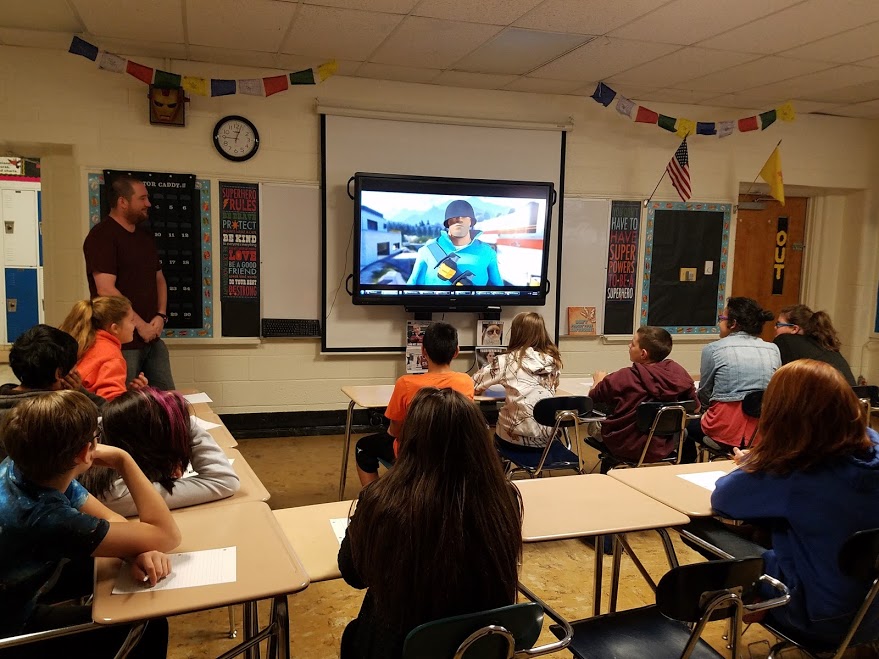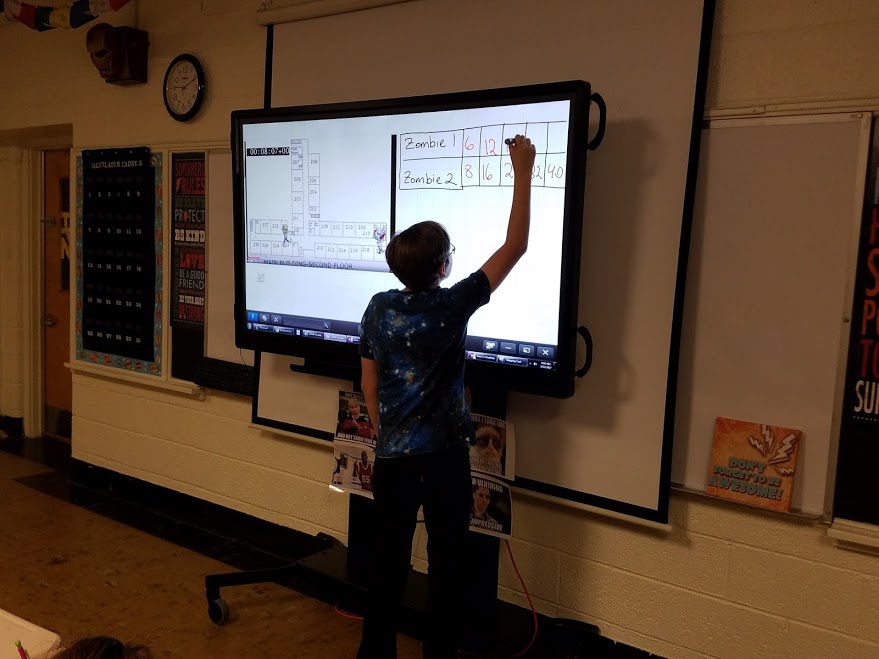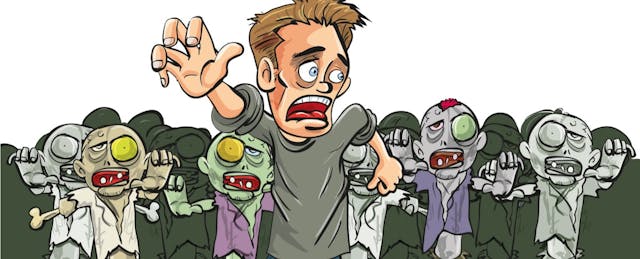It’s the first day of school. Students are lined up outside your door, not yet comfortable enough to talk to each other as they wait to be let into math class. You fist bump them as they enter, and nervously take their seats, unsure of what to expect.
That’s when you hear it, just as the second bell rings to begin class: an emergency tone, like a siren. What is going on?! Without warning, an anxious Army commander flashes across the projected screen, briefing the class on an emergency situation. “Something bad’s happened,” the commander explains hurriedly. “I can’t go into much detail but you need to get out of the building as soon as possible. We’re being overrun...by zombies.”
Students let out a sigh of relief, realizing it’s all pretend. But more importantly, every single one of them is listening attentively for their next instructions—right in the middle of math class.

What may seem like an odd day in a “typical” math class is just the beginning. The Army commander and his instructions mark the start of Project Z, a 3-Act story problem and a new approach to math that’s designed to increase student engagement and make math more personal. The intensity, the narrative—these are now typical of lessons at the Carlsbad Sixth Grade Academy (CSGA).
Project Z is just one example of a 3-Act story problem, a type of lesson that uses pop culture to to truly personalize the learning of our students by matching math themes to students’ interests. As the name suggests, 3-Act problems have three parts:
- Act I is where the true engagement begins. Rather than providing a word problem, this act introduces students to a character—often through videos—and lets them get to know and invest in this character. For example, the Army commander (and their classmates) will be attacked by zombies if they don’t solve the problem.
- Act II gives students the details they need to solve the problem. This step requires students to use a specific math concept. For example, in Project Z, students are tasked with using lowest common multiple to figure how long it will take to escape when zombies have reached a certain spot in the school.
- Act III resolves the problem. This shows the solution to the overall problem being solved, or in this instance, the exact times when the zombies won’t attack based on location and when students could exit safely. This is where students figure out if their hard work will pay off.
Ideally, I would invite you to my classroom to sit in on Project Z, or to observe any of the amazing lessons we’ve created over the past years. I would like you to see how engaged students are in math, sometimes for the first time in their lives. I similarly wish I could show you their dramatic growth on short-cycle assessments to prove how this curriculum shift has changed the way we teach and the way students learn.

But I don’t have the time or space to do that. So instead, for all you intrigued educators out there, here is quick checklist of the process for bringing 3-Act problems like Project Z to your own classroom.
1. Get to know the 3-Act math structure
In the spring of 2015, our math department attended the MidSchoolMath’s National Conference, professional development that changed our teaching forever. The keynote speaker was Dan Meyer, and if you haven’t heard him speak, stop what you’re doing now—no seriously, stop reading this—and YouTube Dan Meyer’s TED talk.
As Meyers explains, traditional math textbooks and the way we teach math is the functional equivalent of turning on “Two and a Half Men” and calling it a day. This man changed the way I look at math problems and has completely changed the way I teach—so do yourself a favor and listen to what he’s got to say.
2. Did I already mention Dan Meyer? Good. Now go to his website
After coming home from the MidSchoolMath National conference completely rejuvenated, a colleague and I immediately dove in and began using 3-Act videos that had been created and published by Dan Meyer. Although it doesn’t have a 3-Act problem for every standard, it is a great place to start. These problems use media and interactive stories, which allow students to become emotionally invested in a math problem.
3.Once you have the structure, start trying to create some on your own story problems
When we saw the immediate increase in student engagement, we thought to ourselves: How can we take this idea even further? So we looked at every standard, simplified the basic principle, and made a 3-Act problem that attempted to completely teach that standard—a la Dan Meyer.
Our first video was shot on a cell phone, and was created using Windows Movie Maker. It was almost impossible to hear, and at one point, someone almost threw up on camera (true story). But ya know what? The kids learned. Not only did they learn, they remembered what they learned. That 3-Act video covered unit rate, and that was our highest tested standard that year.
(Tip: Hate seeing yourself on camera? Go check out a program called Facerig. Great for students to try, too.)
4. Start laying out a curriculum
One of the biggest reactions I hear to 3-Act problems is, “But you can’t do that type of problem all the time!” My response to that is usually, “Yes. Sort of.” I mean, do I have a new 3-Act problem every single day of the year for my students? No. But these problems always drive my curriculum. So when you start perfecting your problems, and find that they’re really good, then start building some units on the structure that they do provide. And if you need help….
5. Contact the professionals
After my math team and I came back from the MidSchoolMath National Conference, we were looking for as much help as we could find. We contacted MidSchoolMath and began working with them closely. Not only did their 3-Act problems blow ours out of the water, they were also creating online video games that require students to successfully solve math problems tied to specific standards in order to bring the game to completion. MidSchoolMath also provides test training software to grow students’ deficiencies, and other digital tools such as math simulators and clicker quizzes that are not only more exciting for students, but cutting-edge. By the beginning of the 2017-2018 school year, they will have a full curriculum that includes a 3-Act problem for every standard for grades 5-8.
6. Be patient
Keep in mind we didn’t come by this overnight. We worked day-by-day and lesson-by-lesson and are still re-thinking problems to help our students with personalized learning. The change may not be instant, but the results you see will be. Even if they are not identical to those that we saw, I guarantee this will change the way you think about math. But most importantly, it will change the way your students think about math.


